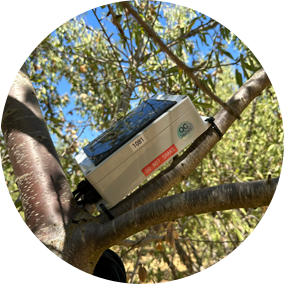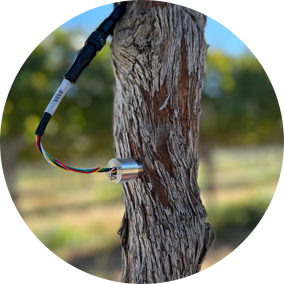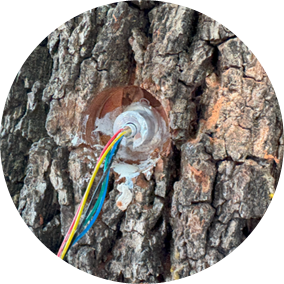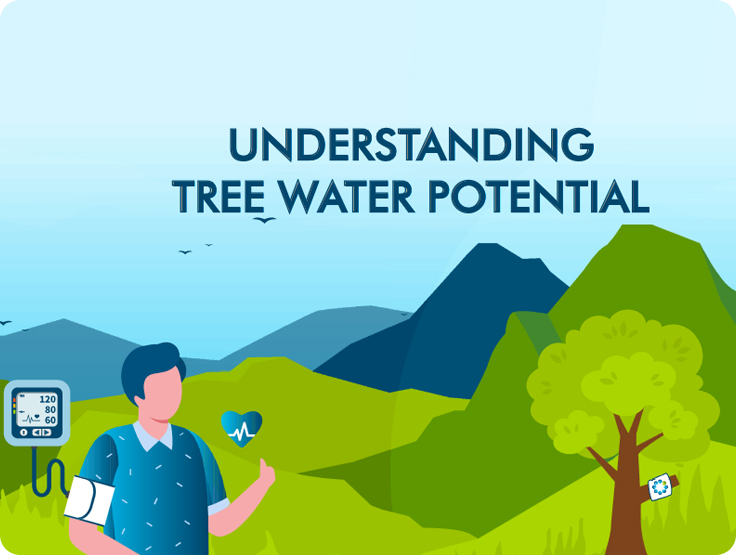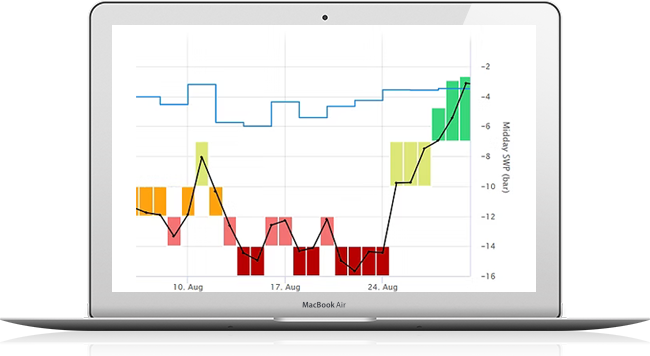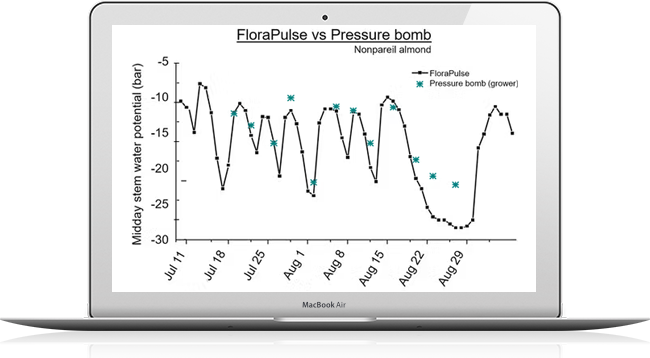About
FloraPulse
Retire the pressure chamber, know exactly when to irrigate, increase crop yield and quality.
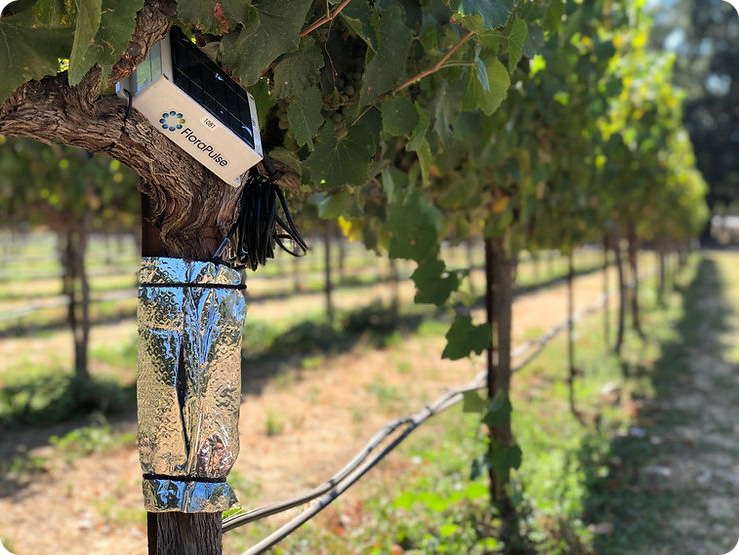
FloraPulse began in the orchards and vineyards of growers.
Since the 1970’s, Alan Lakso, professor of Horticulture at Cornell, had been dragging around the heavy, manual pressure chamber to measure and manage water stress in apple trees and grapevines. Alan was documenting the levels of water stress and their effect on fruit growth and quality. Back then, winegrape growers understood that water stress was important to wine quality, but only had the pressure chamber to measure it.
Why FloraPulse?
Evapotranspiration: The Heartbeat of California’s Ecosystem
As someone who has spent over two decades immersed in the world of agriculture and irrigation, I’ve come to respect evapotranspiration as a silent but powerful force. In California, known for its sprawling vineyards and diverse ecosystems, evapotranspiration is more than a scientific term; it’s a pulse that influences how we manage water resources. It’s the combined process of water evaporation from soil and other surfaces, plus the transpiration from plants. For California, understanding evapotranspiration is crucial for maintaining the balance of our agricultural and natural landscapes.
Why is Evapotranspiration California So Vital?
Evapotranspiration California impacts not just the vineyards of Napa Valley but also the almond orchards of Central Valley. Given our state’s climatic diversity, irrigation scheduling heavily depends on accurate evapotranspiration data. This information becomes the backbone for optimizing water usage to produce high-quality crops while conserving this precious resource. In an era where climate change effects are becoming more pronounced, the balance between water conservation and agriculture productivity becomes pivotal.
In my years working with FloraPulse, technology has transformed how we perceive and manage this process. Our sensor data allows growers to make data-driven decisions, ultimately increasing crop yield and quality. The right evapotranspiration data ensures that orchards don’t experience water stress, which can severely impact growth and fruit production.
From Sensors to Science: Tech’s Role in Evapotranspiration California
Technology has redefined agricultural practices, especially in measuring evapotranspiration. At FloraPulse, we pioneered plant-based irrigation sensors. Integrating microchip tensiometers into tree tissue, we provide accurate readings of plant water potential. This innovation offers a more precise understanding of a plant’s needs compared to traditional methods, such as the pressure chamber.
With our cutting-edge technology, farmers receive daily updates on stem water potential, crucial for timely and effective irrigation. Imagine a farmer working the fields in California’s heat–knowing exactly when and how much to water can make or break a season. Our tools have become indispensable for those looking to maximize efficiency and minimize waste.
How Can You Optimize Water Usage Through Evapotranspiration?
To make the most of evapotranspiration data, there are a few steps every grower should follow:
- Monitor Regularly: Utilize reliable data sources, such as CIMIS, for consistent monitoring.
- Use Advanced Sensors: Employ sensors that provide real-time updates tailored to your crop’s needs.
- Adjust Irrigation: Modify irrigation schedules based on evapotranspiration data to avoid overwatering and under-watering.
- Evaluate Outcomes: Compare crop performance seasonally to understand the impact of changes and refine strategies.
These steps, when followed diligently, ensure that each drop of water is used effectively, promoting sustainable agriculture in California.
What Questions Do People Often Ask About Evapotranspiration?
One common inquiry is, “What exactly influences evapotranspiration levels?” It’s a blend of factors including temperature, humidity, wind speed, and solar radiation. Each of these elements plays a role in water loss through evaporation and transpiration, and understanding them helps predict water needs more accurately.
Another popular question is about the benefits of using evapotranspiration data. By utilizing current and historical data, growers can make informed decisions on irrigation, leading to healthier plants and improved yields.
A Look into the Future: Innovations in Irrigation Management
As our climate evolves, so must our approach to agriculture. Evapotranspiration California will continue to be a focal point, with technology driving new strategies for water management. Innovations such as machine learning and big data analytics are on the horizon, promising even greater precision in water usage.
- Integration with AI for forecasting irrigation needs
- Smarter sensors with enhanced capabilities
- Remote management and automation of irrigation systems
These advancements not only enhance water management but also secure California’s reputation as a leader in sustainable agriculture practices.
What is evapotranspiration, and why is it crucial for California’s agriculture?
Evapotranspiration is essentially the process where water is transferred from the soil and plant surfaces to the atmosphere. It includes both evaporation and transpiration. In California, this process is vital due to the state’s diverse agricultural landscape. Imagine a farmer in the Central Valley looking to optimize water use for almond orchards. By understanding evapotranspiration, they can schedule irrigation more efficiently, conserving water while ensuring healthy crop yields. This balance becomes even more critical as climate change influences water availability, making precise irrigation management essential for sustainable agriculture.
Which factors influence evapotranspiration rates, and how can they be managed?
Several factors affect evapotranspiration rates, including temperature, humidity, wind speed, and solar radiation. When temperatures rise, evaporation increases, while humidity can slow it down. Wind can enhance both evaporation and transpiration by removing the moisture surrounding leaves. Farmers and growers can manage these factors by using advanced irrigation systems like those from FloraPulse, which incorporate real-time data to adjust watering schedules. By integrating technology with these natural processes, we can ensure that water is used where and when it’s needed most, maintaining crop health and productivity.
How has technology transformed the way we measure and manage evapotranspiration?
Technology has revolutionized agriculture, especially in managing evapotranspiration. At FloraPulse, we’ve developed plant-based sensors that measure water potential directly from trees. This advancement allows growers to receive precise data on their crops’ water needs, unlike traditional methods which can be less accurate or timely. Imagine being able to adjust irrigation based on the exact needs of your plants, rather than relying on broader climatic data. This precision not only saves water but also enhances crop yield and quality, making technology an invaluable partner in modern farming strategies.
How can growers optimize water usage using evapotranspiration data?
Optimization begins with regular monitoring of evapotranspiration rates using reliable sources like CIMIS. By employing advanced sensors, growers can receive real-time updates tailored to specific crop needs. For instance, adjusting irrigation schedules based on these readings can prevent overwatering or under-watering, ensuring each drop is used effectively. Evaluating seasonal outcomes further refines this process, helping develop strategies that consistently improve water efficiency. By taking these steps, growers not only conserve water but also contribute to more sustainable agricultural practices in California.
What are some common misconceptions about evapotranspiration?
A frequent misconception is that evapotranspiration is solely a concern during hot, dry periods. In reality, it is a year-round factor that affects water management decisions. Another misunderstanding is that all crops have the same evapotranspiration rate. In truth, different plants have varying water needs, influenced by their environment and growth stages. By using FloraPulse’s technology, growers can dispel these myths. Our sensors provide crop-specific data, helping farmers understand and act on the unique evapotranspiration requirements of their plants. This awareness is crucial for making informed irrigation decisions and optimizing water use efficiently.
What are some advanced insights or strategies for managing evapotranspiration in California?
One advanced strategy is integrating machine learning algorithms with evapotranspiration data to predict future water needs. This approach allows farmers to anticipate changes and adjust their practices proactively. At FloraPulse, we’re exploring the potential of AI to enhance our sensors, providing even more precise irrigation recommendations. Another insight is the use of big data analytics to assess long-term patterns and adapt to climate variability. By staying at the forefront of technological advancements, growers can maintain their competitive edge, ensuring sustainable and profitable farming in an ever-changing environment.
How are innovations in irrigation management enhancing evapotranspiration efficiency?
Innovations in irrigation management are driving significant improvements in how we handle evapotranspiration. For example, remote management systems allow farmers to control irrigation from afar, ensuring timely responses to changing conditions. At FloraPulse, we’re working on integrating smarter sensors that offer enhanced capabilities. These advancements facilitate more accurate water application, reducing waste and boosting crop health. The future holds even more promise, with AI-driven tools offering unprecedented precision in water management. These technologies are not just about efficiency but also about securing a sustainable future for agriculture in California.
What practical tips can growers follow to improve evapotranspiration management in their fields?
Start by regularly monitoring evapotranspiration using tools like FloraPulse sensors for accurate readings. Next, customize irrigation schedules to align with your specific crop needs, avoiding a one-size-fits-all approach. Consider evaluating outcomes at the end of each season to identify areas for improvement. Moreover, staying informed about the latest technologies and integrating them into your practices can significantly enhance management strategies. Remember, water is a precious resource, and efficient evapotranspiration management not only benefits your crops but also supports broader environmental sustainability.
How It Works
How It Works
The FloraPulse system is a microchip tensiometer (microtensiometer) that is embedded into the tree woody tissue and directly measures the water status, known as water potential. Because the measurement is taken directly inside the water-carrying tissue, readings are very accurate and reliable. You receive daily midday stem water potential readings, along with science-backed irrigation recommendations.
Weekly Reports
Receive weekly reports on your crop’s water-stress history, color-coded by stress level. Use clear, detailed data to adjust your irrigation and get that perfect vintage, that perfect yield. Every year.
Scientific Validation
The sensor data has been validated against the Scholander chamber with good correlation in prune, almond, winegrape (and others).
Technology Backers

Our technology has been funded by the NSF and USDA, and was originally developed at Cornell University.
What is FloraPulse?
The most accurate way to irrigate.
Customer Testimonials
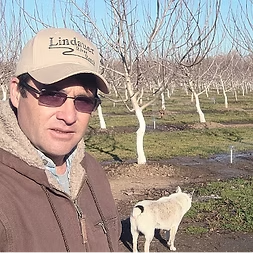

“We were extremely happy with the FloraPulse system we tested in our prune orchard this year. We found that the FloraPulse readings correlated very well with our pressure bomb readings…
Michael Vasey
Lindauer River Ranch
Red Bluff, California
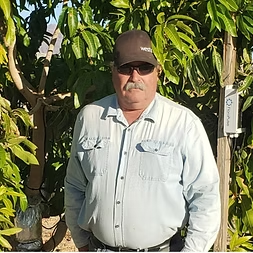

“I am very happy with the FloraPulse unit. I grow a rare mango crop, in a desert environment with extremely high summer temperatures, in alluvium soil that has very limited…
Rod Chamberlain
Wong Farms
Mecca, California


